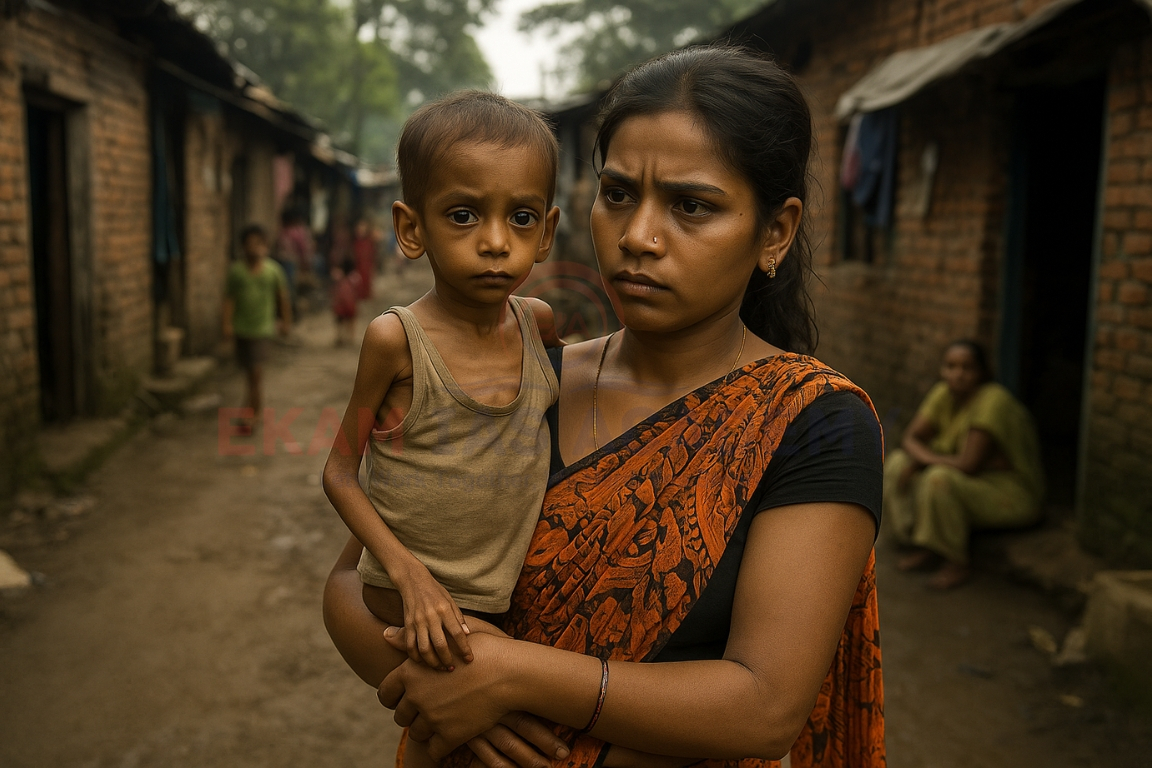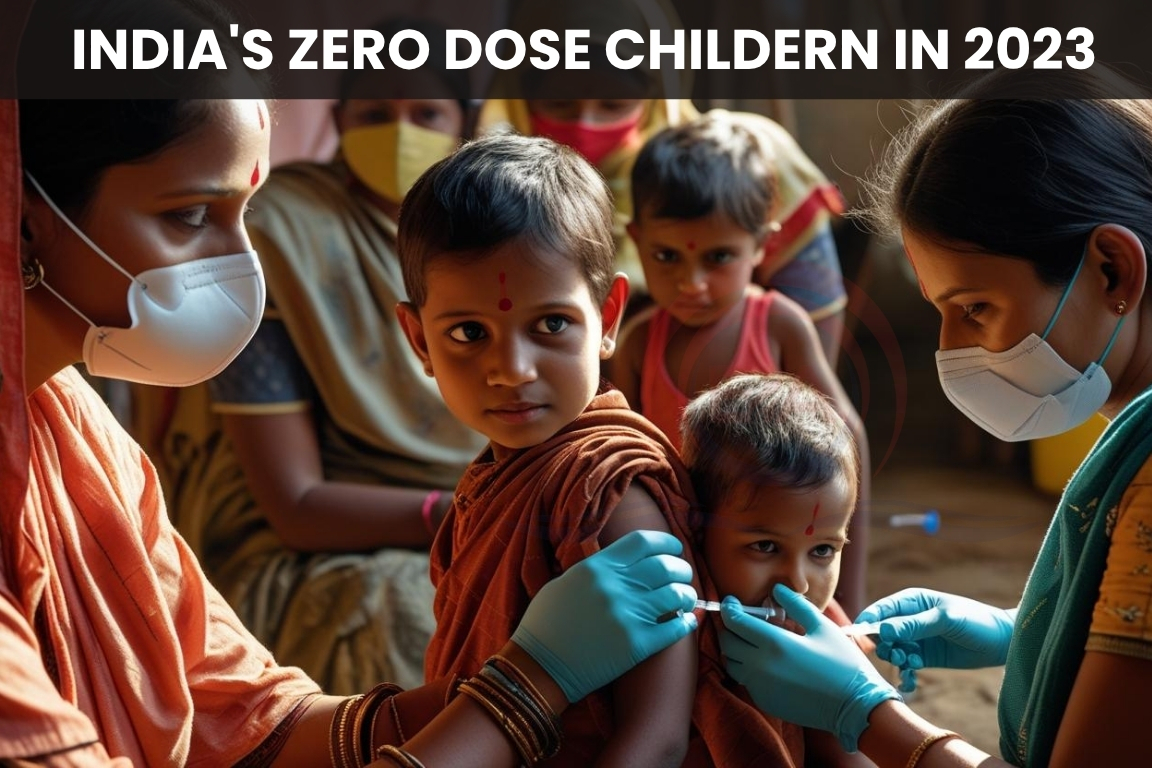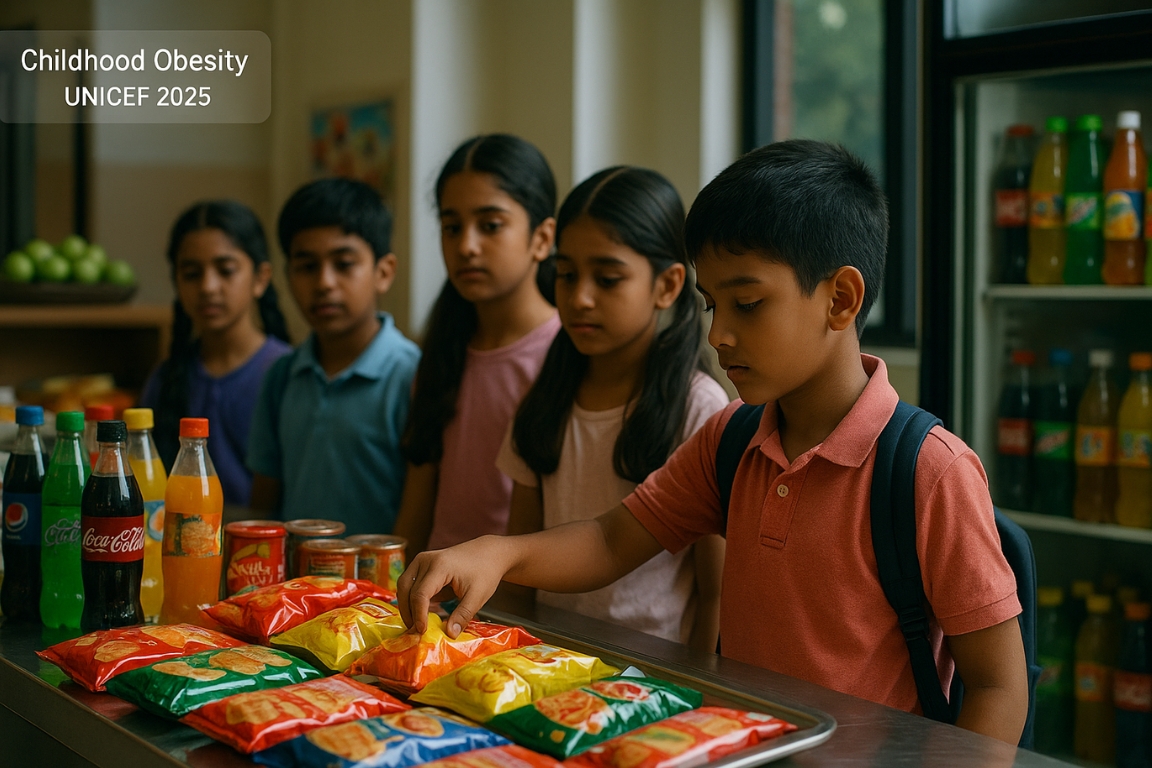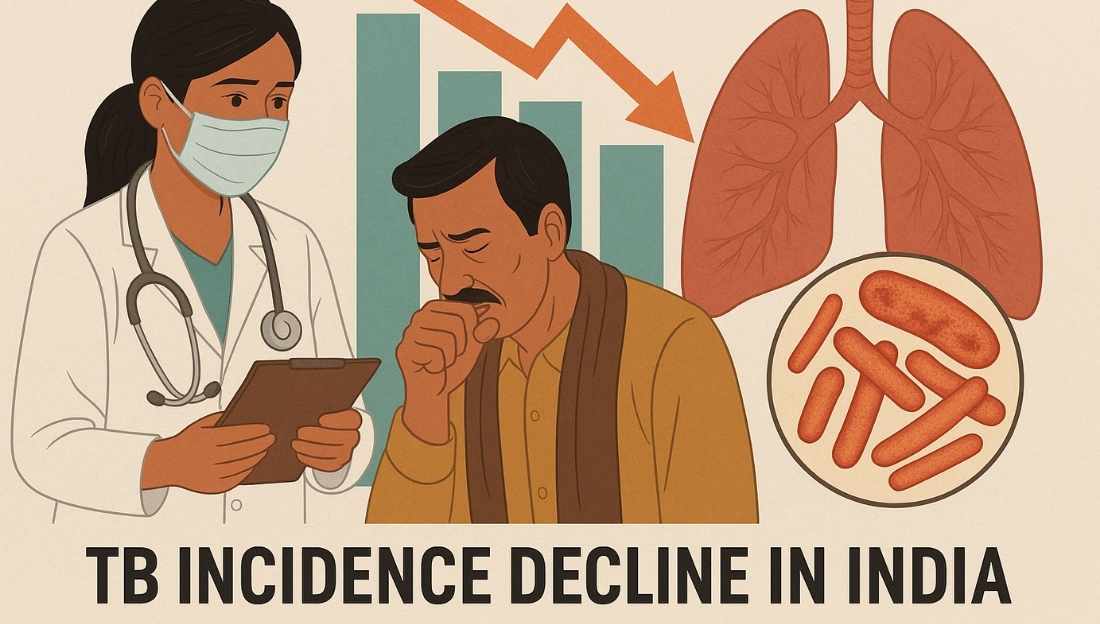Recent Poshan Tracker (June 2025) data shows that 37% of Indian children under five are stunted, only a marginal improvement from 38.4% in 2016. This highlights that government targets under POSHAN Abhiyaan (2018) and Mission 25 by 2022 have not been achieved.
What is Stunting?
- Stunting means a child is too short for their age, mainly due to chronic malnutrition.
- It reflects not just poor diet but also maternal health, sanitation, and socio-economic conditions.
- Stunting has long-term impacts on health, learning ability, and productivity.
Government Targets vs Reality
- POSHAN Abhiyaan (2018) aimed to reduce stunting by 2 percentage points annually.
- Mission 25 by 2022 set a goal of reducing stunting to 25% by 2022.
- As of 2025, prevalence is still 37%, showing little progress.
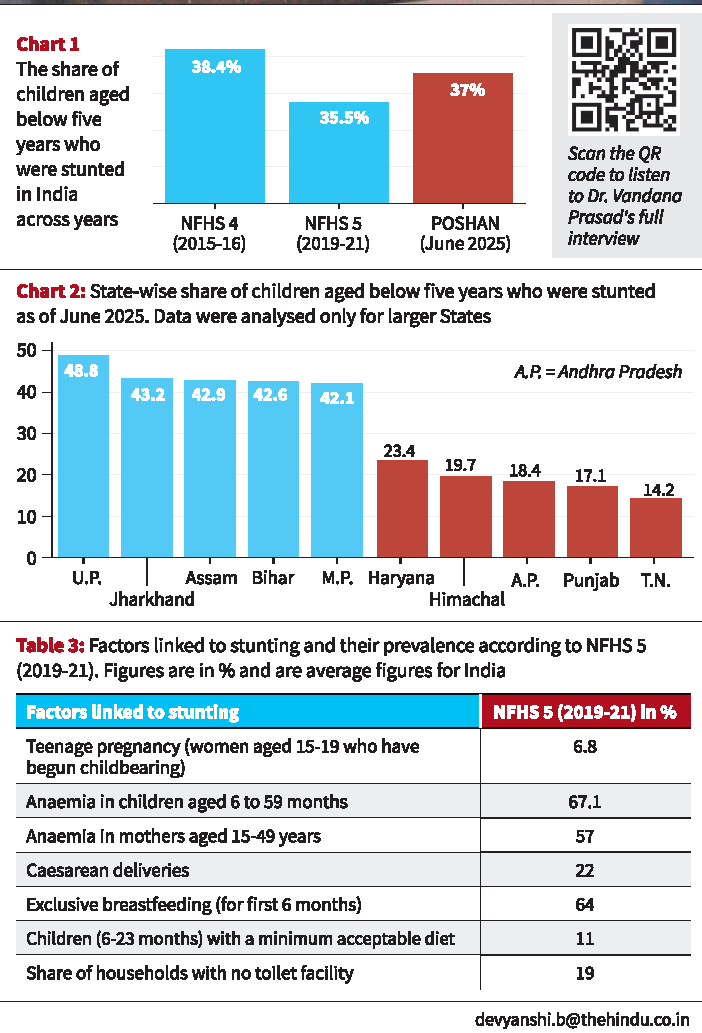
Key Factors Behind Stunting
Maternal Health and Early Birth Conditions
- Nearly half of stunted children are born small.
- Teenage pregnancies increase risk, as young mothers’ bodies are not ready for childbirth.
- Around 7% of women aged 15-19 have begun childbearing (2019-21 data).
Role of Education
- Mother’s education strongly reduces stunting.
- 46% of children of mothers with no schooling are stunted, compared to 26% when mothers studied 12+ years.
- Education improves antenatal care, nutrition practices, and delays early marriage/pregnancy.
Childbirth Practices and Breastfeeding
- C-sections rose from 9% (2005-06) to 22% (2021), often disrupting early breastfeeding.
- Only 64% of infants below 6 months are exclusively breastfed.
- Socio-economic gaps worsen the problem: poorer women return to work early, reducing breastfeeding time.
Nutrition and Diet Quality
- Indian diets are often carbohydrate-heavy, low in protein and micronutrients.
- Only 11% of children under two meet the “minimum acceptable diet” standard.
- Limited access to eggs, pulses, and nutrient-rich food in many communities.
Anaemia and Maternal Nutrition
- 57% of women (15-49 years) and 67% of children under five are anaemic (2019-21).
- Weak maternal nutrition passes disadvantages to the child.
Sanitation and Infections
- 19% of households still practice open defecation.
- Unsafe water and poor sanitation increase infections, harming nutrient absorption.
- Creates a vicious cycle of illness and malnutrition.
Wider Implications of Stunting
- Affects cognitive development, learning outcomes, and productivity.
- Linked to poverty, lower employability, and intergenerational deprivation.
- Weakens India’s human capital and growth potential.
way forward:
- Improve Maternal & Child Nutrition – Ensure pregnant women and young children get balanced diets, iron, folic acid, and micronutrient supplements.
- Promote Clean Water & Sanitation – Provide safe drinking water, handwashing, and better sanitation to reduce infections that hinder growth.
- Strengthen Healthcare & Awareness – Expand access to immunization, growth monitoring, and educate families about breastfeeding and proper child feeding practices.
Conclusion:
India’s struggle against stunting shows that food security alone is not enough. Maternal health, education, nutrition diversity, and sanitation must be improved together. Without urgent corrective steps, the cycle of malnutrition and deprivation will continue to affect generations.


